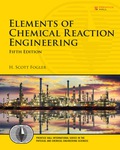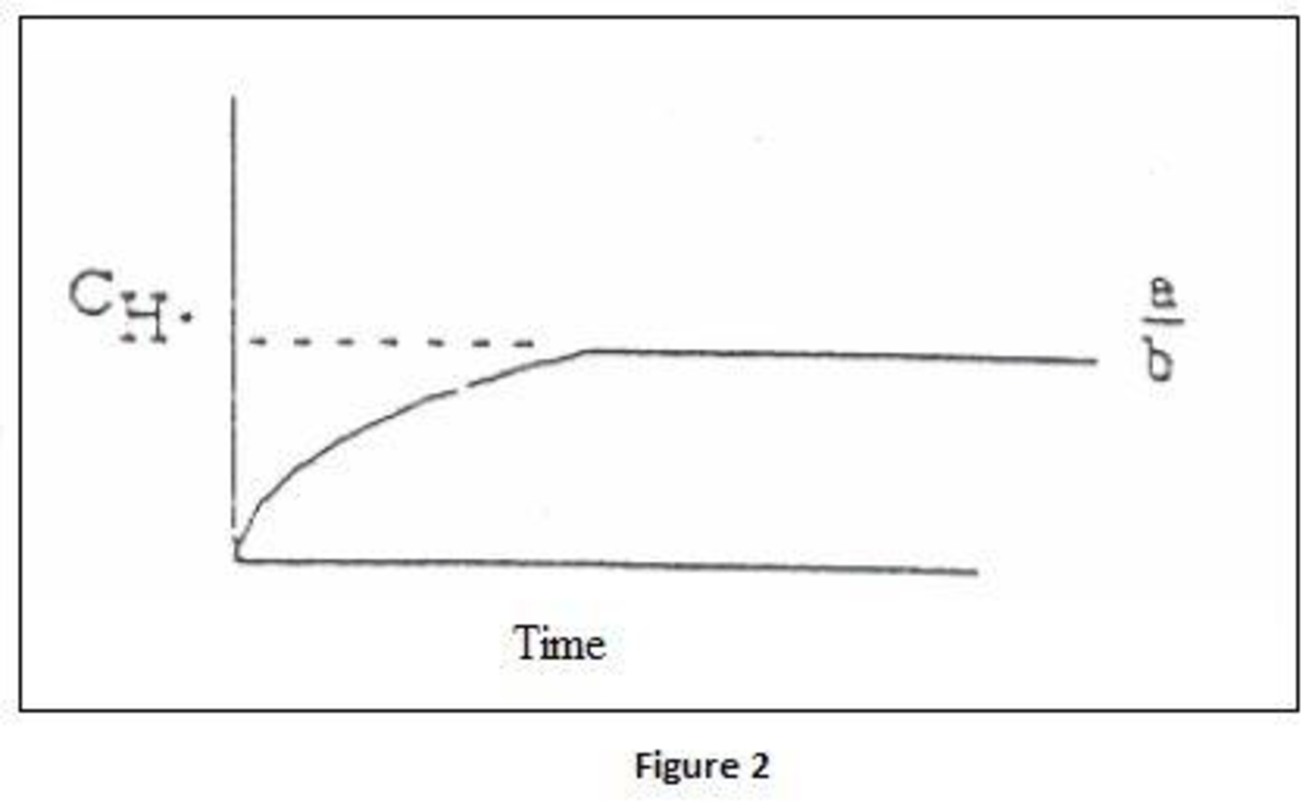
(Flame retardants) Hydrogen radicals are important to sustaining combustion reactions. Consequently, if chemical compounds that can scavenge the hydrogen radicals are introduced, the flames can be extinguished. While many reactions occur during the combustion process, we shall choose CO flames as a model system to illustrate the process (S. Senkan et al., Combustion and Flame, 69, 113). In the absence of inhibitors

The last two reactions are rapid compared to the first two. When HCl is introduced to the flame, the following additional reactions occur:
Assume that all reactions are elementary and that the PSSH holds for the O·, OH·, and Cl· radicals.
- (a) Derive a rate law for the consumption of CO when no retardant is present.
- (b) Derive an equation for the concentration of H· as a function of time, assuming constant concentration of O2, CO, and H2O for both uninhibited combustion and combustion with HCl present. Sketch H· versus time for both cases.
(a)
Interpretation:
Rate law for the consumption of
Concept Introduction:
Rate law or rate equation: Rate law:
It is generally the rate equation that consists of the reaction rate with the concentration or the pressures of the reactants and constant parameters.
Explanation of Solution
Uninhibited combustion can be given as:
Reaction when
Rate law for the consumption of
(b)
Interpretation:
Equation for the concentration of
Concept Introduction:
Rate law or rate equation: Rate law:
It is generally the rate equation that consists of the reaction rate with the concentration or the pressures of the reactants and constant parameters.
Explanation of Solution
Uninhibited combustion can be given as:
Reaction when
Rate law for the consumption of
Rate of formation of active intermediates is zero. Here,
Hence,
Also,
Substitute
Therefore,
Substitute equation for
When volume is constant, concentration of
By integration factor
When
Therefore,
When

When

Concentration of
Where,
When
Therefore,
Want to see more full solutions like this?
Chapter 9 Solutions
Elements of Chemical Reaction Engineering (5th Edition) (Prentice Hall International Series in the Physical and Chemical Engineering Sciences)
Additional Engineering Textbook Solutions
Artificial Intelligence: A Modern Approach
Web Development and Design Foundations with HTML5 (9th Edition) (What's New in Computer Science)
Problem Solving with C++ (9th Edition)
Java How To Program (Early Objects)
Starting out with Visual C# (4th Edition)
Materials for Civil and Construction Engineers (4th Edition)
 Introduction to Chemical Engineering Thermodynami...Chemical EngineeringISBN:9781259696527Author:J.M. Smith Termodinamica en ingenieria quimica, Hendrick C Van Ness, Michael Abbott, Mark SwihartPublisher:McGraw-Hill Education
Introduction to Chemical Engineering Thermodynami...Chemical EngineeringISBN:9781259696527Author:J.M. Smith Termodinamica en ingenieria quimica, Hendrick C Van Ness, Michael Abbott, Mark SwihartPublisher:McGraw-Hill Education Elementary Principles of Chemical Processes, Bind...Chemical EngineeringISBN:9781118431221Author:Richard M. Felder, Ronald W. Rousseau, Lisa G. BullardPublisher:WILEY
Elementary Principles of Chemical Processes, Bind...Chemical EngineeringISBN:9781118431221Author:Richard M. Felder, Ronald W. Rousseau, Lisa G. BullardPublisher:WILEY Elements of Chemical Reaction Engineering (5th Ed...Chemical EngineeringISBN:9780133887518Author:H. Scott FoglerPublisher:Prentice Hall
Elements of Chemical Reaction Engineering (5th Ed...Chemical EngineeringISBN:9780133887518Author:H. Scott FoglerPublisher:Prentice Hall
 Industrial Plastics: Theory and ApplicationsChemical EngineeringISBN:9781285061238Author:Lokensgard, ErikPublisher:Delmar Cengage Learning
Industrial Plastics: Theory and ApplicationsChemical EngineeringISBN:9781285061238Author:Lokensgard, ErikPublisher:Delmar Cengage Learning Unit Operations of Chemical EngineeringChemical EngineeringISBN:9780072848236Author:Warren McCabe, Julian C. Smith, Peter HarriottPublisher:McGraw-Hill Companies, The
Unit Operations of Chemical EngineeringChemical EngineeringISBN:9780072848236Author:Warren McCabe, Julian C. Smith, Peter HarriottPublisher:McGraw-Hill Companies, The





